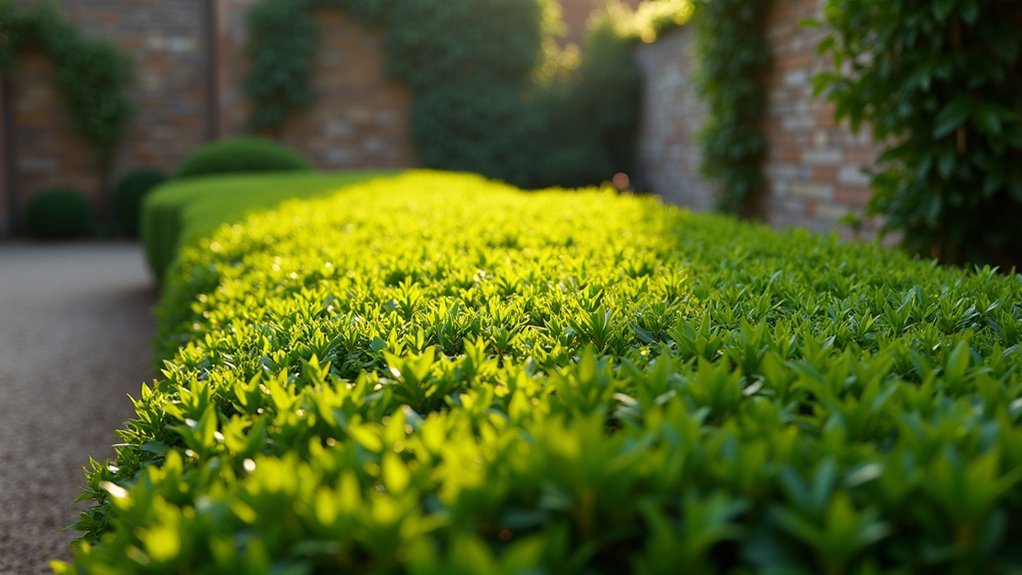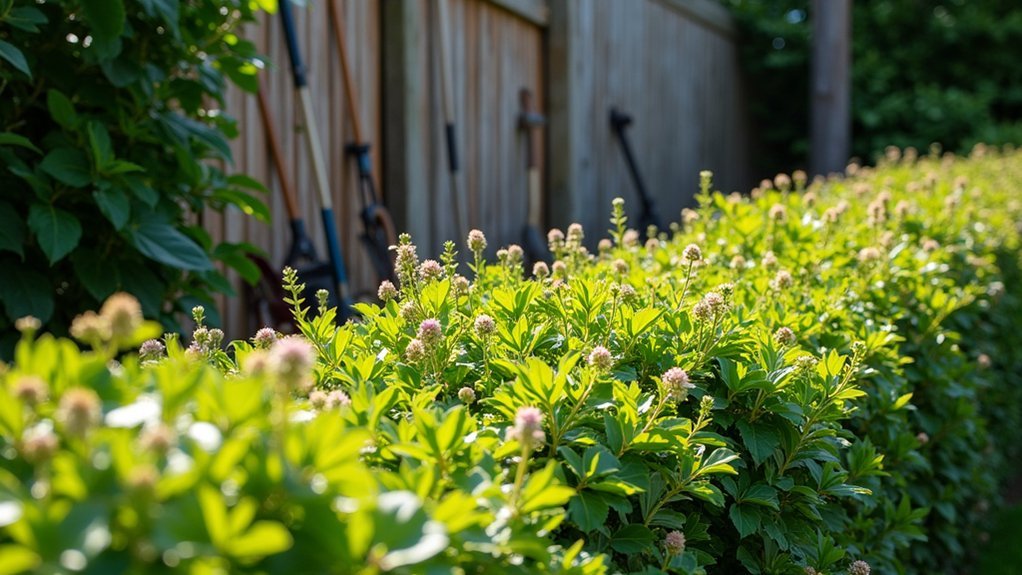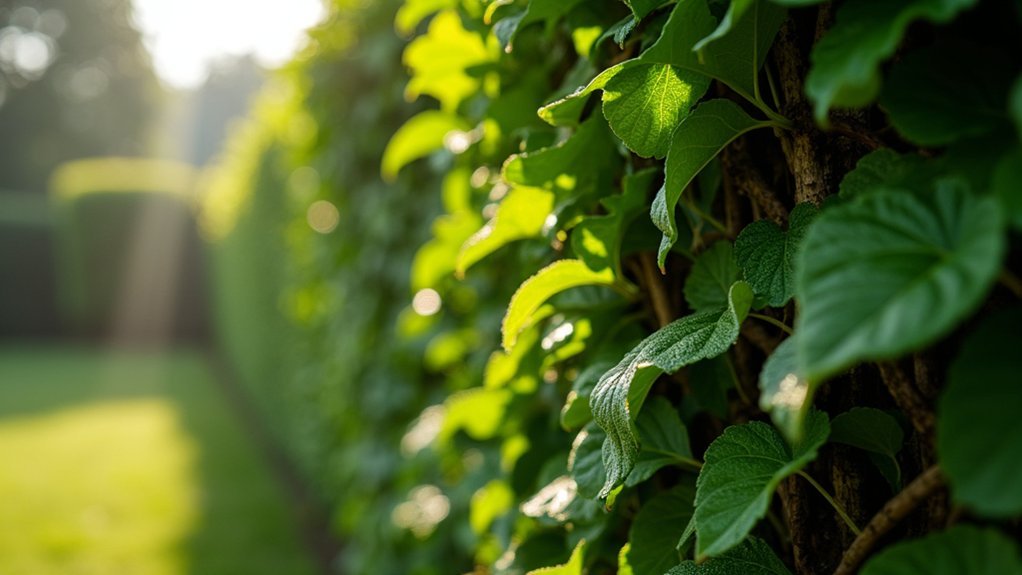To master the South English hedge style, cut stems at a 30-degree angle while preserving a small section of bark for sap flow. Place your stakes at an angle toward the hedge, interlocking hazel ones by weaving them together for maximum support. Implement a seasonal management routine with winter coppicing, spring gap assessments, summer minimal intervention, and autumn trimming. These traditional techniques guarantee your hedgerow maintains its characteristic density and structure for generations to come.
Perfecting Your Cuts: The Foundation of South English Pleaching

Slicing through the stem with purpose transforms an ordinary hedge into a magnificent South English masterpiece. When you cut stems, maintain a 30-degree angle that allows for bending without breaking—important for proper pleaching. Always leave a small piece of bark and cambium to guarantee sap continues flowing, promoting healthy new growth.
For thicker stems, adopt a two-handed approach with your bill hook to maximize control and leverage. This technique prevents damage to the living lip of the stem, which is essential for the hedge’s long-term health.
Remember to regularly inspect the top of the hedge, trimming stakes for a clean finish. Your precision cuts create the framework upon which the entire South English style depends, establishing both structural integrity and visual appeal.
Strategic Stake Placement and Binding for Maximum Stability
While cutting technique forms the foundation of your South English hedge, proper stake placement and binding determine its ultimate strength and longevity.
Next time you’re installing stakes, drive them at an angle toward the hedge, not straight down. This angled approach provides ideal support against wind, especially important for creating a dense hedge structure.
Interlock your long hazel stakes by weaving them together to enhance wind resistance. When binding, employ a single twist for adequate tension; add double twists only if necessary, as excessive tightening can restrict sap flow.
Create a gentle taper in your stake arrangement to promote healthy growth and prevent infection at cut pleacher areas.
Remember to regularly inspect bindings and adjust with a mallet as your hedge matures, ensuring continued stability.
Seasonal Management to Maintain Thick, Healthy Hedgerows

Because hedgerows demand different attention throughout the year, establishing a seasonal management routine is vital for maintaining their health. Your South of England hedges, like midland style variations, require regular trimming to prevent gaps and oversized stools from developing.
| Season | Management Task | Benefits |
|---|---|---|
| Winter | Coppicing/Laying | Rejuvenates structure, encourages fresh growth |
| Spring | Gap assessment | Identify spaces for new plantings |
| Summer | Minimal intervention | Allows wildlife nesting periods |
| Autumn | Trimming/Staking | Strengthens wind resistance before winter |
When you’re performing late-season maintenance, always check for nesting birds before proceeding. If you notice your hedge thinning, implement coppicing to stimulate fresh growth from the base. Remember that properly placed stakes not only support laid stems but also guarantee your hedge maintains its characteristic density throughout seasonal changes.
Frequently Asked Questions
How Do You Lay a Hedge in the South of England Style?
You’ll cut flexible wrist-thick stems at 30-degree angles, lay them down in a weave pattern, install interlocking stakes for support, add twisted binders for tension, and trim tops while keeping the base thick.
How to Make an English Hedgerow?
To make an English hedgerow, you’ll need to plant native species like hawthorn and blackthorn in a line, maintain proper spacing, and regularly trim them to create a dense, wildlife-friendly boundary on your property.
What Trees Are Good for Hedgelaying?
You’ll find hawthorn, blackthorn, and dog rose work best for hedgelaying as they’re flexible yet sturdy. Don’t forget to include native shrubs like spindle and gelder rose to boost biodiversity and hedge health.
How to Lay a Hedge for Beginners Step by Step?
First, choose a healthy hedge section without nesting birds. Cut stems partially through, bend at 30 degrees, insert support stakes, weave binders around the laid stems, and trim for neatness. You’ll have a sturdy, living fence.
In Summary
You’ve now learned three essential techniques for the South English hedge style. By mastering precise cuts, implementing proper stake support systems, and following a seasonal maintenance schedule, you’ll create magnificent living boundaries. Don’t underestimate the patience required—these hedges evolve over years. With consistent application of these methods, you’ll soon enjoy the distinguished charm that only authentic South English hedgerows can provide to your landscape.





Leave a Reply